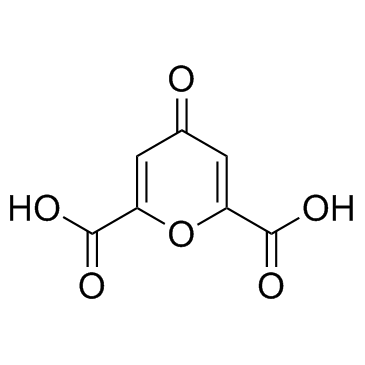Purification and characterization of dihydrodipicolinate synthase from pea.
C Dereppe, G Bold, O Ghisalba, E Ebert, H P Schär
文献索引:Plant Physiol. 98(3) , 813-821., (1992)
全文:HTML全文
摘要
Dihydrodipicolinate synthase (EC 4.2.1.52), the first enzyme unique to lysine biosynthesis in bacteria and higher plants, has been purified to homogeneity from etiolated pea (Pisum sativum) seedlings using a combination of conventional and affinity chromatographic steps. This is the first report on a homogeneous preparation of native dihydrodipicolinate synthase from a plant source. The pea dihydrodipicolinate synthase has an apparent molecular weight of 127,000 and is composed of three identical subunits of 43,000 as determined by gel filtration and cross-linking experiments. The trimeric quaternary structure resembles the trimeric structure of other aldolases, such as 2-keto-3-deoxy-6-phosphogluconic acid aldolase, which catalyze similar aldol condensations. The amino acid compositions of dihydrodipicolinate synthase from pea and Escherichia coli are similar, the most significant difference concerns the methionine content: dihydrodipicolinate synthase from pea contains 22 moles of methionine residue per mole of native protein, contrary to the E. coli enzyme, which does not contain this amino acid at all. Dihydrodipicolinate synthase from pea is highly specific for the substrates pyruvate and l-aspartate-beta-semialdehyde; it follows Michaelis-Menten kinetics for both substrates. The pyruvate and l-aspartate-beta-semialdehyde have Michaelis constant values of 1.70 and 0.40 millimolar, respectively. l-Lysine, S-(2-aminoethyl)-l-cysteine, and l-alpha-(2-aminoethoxyvinyl)glycine are strong allosteric inhibitors of the enzyme with 50% inhibitory values of 20, 160, and 155 millimolar, respectively. The inhibition by l-lysine and l-alpha-(2-aminoethoxyvinyl)glycine is noncompetitive towards l-aspartate-beta-semialdehyde, whereas S-(2-aminoethyl)-l-cysteine inhibits dihydrodipicolinate synthase competitively with respect to l-aspartate-beta-semialdehyde. Furthermore, the addition of (2R,3S,6S)-2,6-diamino-3-hydroxy-heptandioic acid (1.2 millimolar) and (2S,6R/S)-2,6-diamino-6-phosphono-hexanic acid (1.2 millimolar) activates dihydrodipicolinate synthase from pea by a factor of 1.4 and 1.2, respectively. This is the first reported activation process found for dihydrodipicolinate synthase.
相关化合物
| 结构式 | 名称/CAS号 | 分子式 | 全部文献 |
|---|---|---|---|
 |
白屈菜酸
CAS:99-32-1 |
C7H4O6 |
|
Chelidonic acid and other conformationally restricted substr...
1985-12-01 [Biochem. Pharmacol. 34 , 4145-4150, (1985)] |
|
Tracer studies with 13C-labeled carbohydrates in cultured pl...
2001-05-01 [Phytochemistry 57(1) , 33-42, (2001)] |
|
Inhibitory effects of chelidonic acid on IL-6 production by ...
2011-12-01 [Immunopharmacol. Immunotoxicol. 33(4) , 614-9, (2011)] |
|
Beneficial effects of chelidonic acid on a model of allergic...
2011-01-01 [Int. Immunopharmacol. 11(1) , 39-45, (2011)] |
|
The therapeutic effect of chelidonic acid on ulcerative coli...
2012-01-01 [Biol. Pharm. Bull. 35(5) , 666-71, (2012)] |